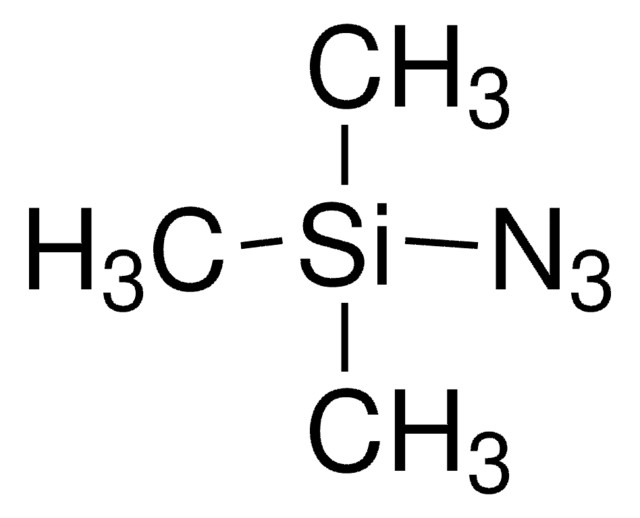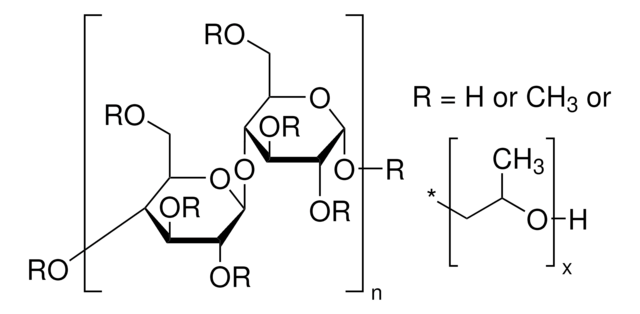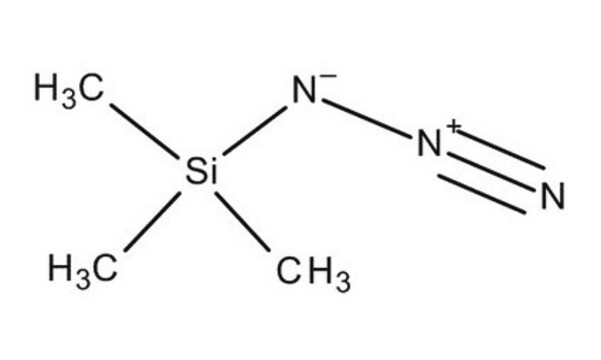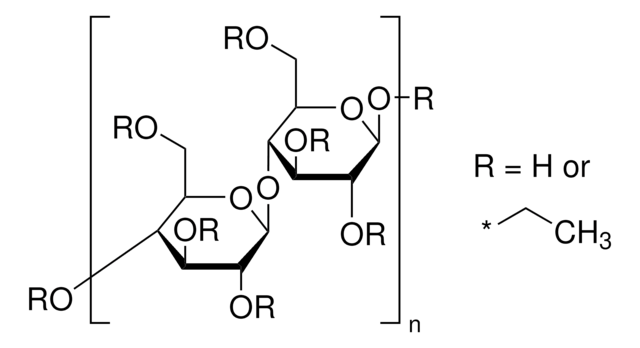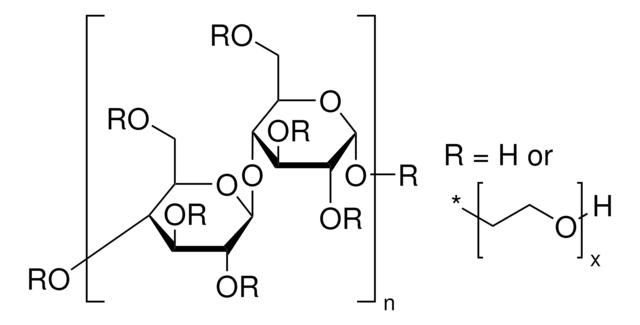191892
Hydroxypropyl cellulose
average Mw ~370,000, powder, 20 mesh particle size (99% through)
Synonyme(s) :
HPC
About This Item
Produits recommandés
Description
biological oxygen demand (BOD) 14,000 ppm
Niveau de qualité
Forme
powder
Température d'inflammation spontanée
752 °F
Poids mol.
average Mw ~370,000
Impuretés
<5 wt. %
Taille des particules
20 mesh (99% through)
pH
5.0-8.5
Tension interfaciale de l'huile minérale
12.5 dyn/cm, 0.1 wt. % in H2O (vs. mineral oil)
Viscosité
150-400 cP, 2 wt. % in H2O(25 °C, Brookfield, spindle #2) (60 rpm)(lit.)
Solubilité
H2O: insoluble (above 45 °C)
polar organic solvents: soluble
Densité
0.5 g/mL at 25 °C (lit.)
InChI
1S/C12H20N2/c1-5-12(13)11-7-6-10(14(3)4)8-9(11)2/h6-8,12H,5,13H2,1-4H3
Clé InChI
RRHXDYJWVYFMKV-UHFFFAOYSA-N
Vous recherchez des produits similaires ? Visite Guide de comparaison des produits
Catégories apparentées
Description générale
Application
Code de la classe de stockage
11 - Combustible Solids
Classe de danger pour l'eau (WGK)
WGK 1
Point d'éclair (°F)
Not applicable
Point d'éclair (°C)
Not applicable
Équipement de protection individuelle
Eyeshields, Gloves, type N95 (US)
Faites votre choix parmi les versions les plus récentes :
Déjà en possession de ce produit ?
Retrouvez la documentation relative aux produits que vous avez récemment achetés dans la Bibliothèque de documents.
Les clients ont également consulté
Notre équipe de scientifiques dispose d'une expérience dans tous les secteurs de la recherche, notamment en sciences de la vie, science des matériaux, synthèse chimique, chromatographie, analyse et dans de nombreux autres domaines..
Contacter notre Service technique
